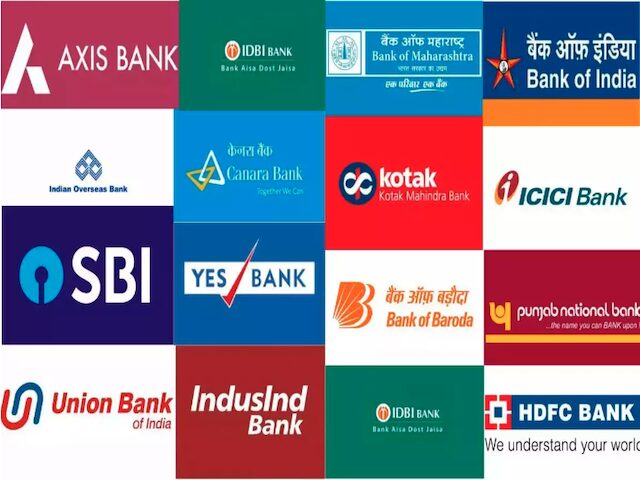Do You Know How India’s Banking Industry Became the Backbone of the Economy
#IndianBankingIndustry, #HistoryOfBanking, #BankingInIndia, #DigitalBanking, #FinancialInclusion, #RBIIndia, #UPIRevolution, #PublicSectorBanks, #PrivateBanks, #BankingTechnology, #IndianEconomy, #FintechIndia, #JanDhan, #MudraLoans, #BankingReforms, #BankingFuture
BUSINESS & ECONOMY
7/25/20253 min read


Do you know how the Indian banking industry has transformed from colonial-era institutions to the digital financial powerhouses we see today?
India's banking sector plays a pivotal role in economic growth, financial inclusion, and technological advancement. Whether it’s managing savings, offering loans, supporting startups, or funding large-scale infrastructure projects, the Indian banking system is at the center of the country’s financial heartbeat.
This article takes you through a detailed journey of India’s banking industry—from its roots to the modern-day revolution.
1. The Early Foundations of Indian Banking
The first traces of banking in India go back to the Vedic period, where rudimentary financial systems like money lending and deposits existed through community leaders and merchants.
However, modern banking started with the British East India Company:
Bank of Hindustan (1770) – First bank in India, based in Calcutta.
Presidency Banks – Bank of Bengal (1806), Bank of Bombay (1840), and Bank of Madras (1843).
These merged in 1921 to form the Imperial Bank of India, which later became State Bank of India in 1955.
2. Key Milestones in Indian Banking History
Here are some landmark developments:
a. 1949 – RBI Nationalized
The Reserve Bank of India (est. 1935) became a government-owned central bank.
Took control over monetary policy, currency issuance, and regulation of banks.
b. 1955 – Nationalization of SBI
The Imperial Bank became State Bank of India (SBI), under government ownership.
c. 1969 & 1980 – Major Bank Nationalizations
14 major banks were nationalized in 1969.
6 more in 1980.
This step aimed to bring banking to rural areas and small borrowers, promoting financial inclusion.
d. 1991 – Economic Liberalization
Entry of private banks like HDFC, ICICI, Axis.
Technological reforms and foreign investments reshaped the sector.
3. Types of Banks in India Today
India has a diversified banking structure, each serving different needs:
a. Scheduled Commercial Banks
Public Sector Banks (SBI, PNB, BoB)
Private Sector Banks (HDFC, ICICI, Axis)
Foreign Banks (Citi, HSBC, Deutsche Bank)
b. Regional Rural Banks (RRBs)
Target rural and agricultural finance.
Co-owned by Government of India, state governments, and sponsor banks.
c. Cooperative Banks
Serve local communities, farmers, and small traders.
d. Small Finance Banks & Payments Banks
Created to promote financial inclusion.
Examples: AU Small Finance Bank, Paytm Payments Bank.
e. Development Banks
Focus on industrial growth (e.g., SIDBI, NABARD, EXIM Bank).
4. Role of Reserve Bank of India (RBI)
RBI is India’s central bank and regulator, managing:
Monetary policy
Inflation targeting
Currency stability
Licensing of banks
Supervision of NBFCs and cooperative banks
Digital payment systems
It is also the lender of last resort in times of financial crisis.
5. Key Functions of Banks in India
Modern Indian banks perform various critical functions:
Accepting deposits (Savings, Current, Fixed)
Providing loans and advances
Enabling digital payments and transfers
Wealth management and insurance
Foreign exchange services
Financial inclusion via Jan Dhan accounts
6. Technological Evolution in Indian Banking
Indian banking has rapidly embraced digital transformation, especially post-2016’s demonetization.
a. Core Banking Systems (CBS)
All branches connected digitally—customers can operate from any branch.
b. Digital Payments Boom
UPI, IMPS, NEFT, RTGS systems
Mobile wallets like PhonePe, Paytm, Google Pay
c. Internet & Mobile Banking
24x7 access to account management, bill payments, and fund transfers.
d. AI, Blockchain, and Fintech Integration
Banks now use AI for fraud detection, chatbots for customer service, and blockchain for secure transactions.
7. Government Schemes and Financial Inclusion
India has made great strides in bringing banking to the unbanked:
a. Pradhan Mantri Jan Dhan Yojana (PMJDY)
Over 50 crore zero-balance bank accounts opened.
b. Mudra Loans
Loans to small businesses without collateral.
c. DBT (Direct Benefit Transfer)
Government subsidies and pensions directly credited to accounts.
8. Challenges Faced by Indian Banks
Despite progress, Indian banks face several ongoing issues:
Non-Performing Assets (NPAs): Unrecovered loans impact profitability.
Cybersecurity: Rise in online frauds.
Competition from Fintechs: Traditional banks must innovate.
Regulatory Compliance: Stricter norms affect speed and flexibility.
9. The Future of Indian Banking
The Indian banking industry is expected to:
Embrace AI, blockchain, and digital onboarding
Expand green banking and ESG financing
Collaborate with fintech startups
Continue financial literacy programs
Support government infrastructure and digital economy plans
The rise of Digital Banks, Open Banking, and CBDCs (Central Bank Digital Currencies) will redefine customer experience in the coming decade.
Conclusion
The Indian banking industry has come a long way—from colonial money lenders to AI-powered digital ecosystems. It has fueled India’s growth, empowered millions, and adapted to every wave of transformation.
Whether you are a student, entrepreneur, farmer, or investor—banks touch every aspect of your life. As India advances toward becoming a $5 trillion economy, the banking sector will remain the pillar of strength and innovation.
Knowledge
Empowering minds with reliable educational content daily.
Newsletter Signup
© 2025 DoYouKnow. All rights reserved.
Stay Ahead of the Trends – Join Our Newsletter
